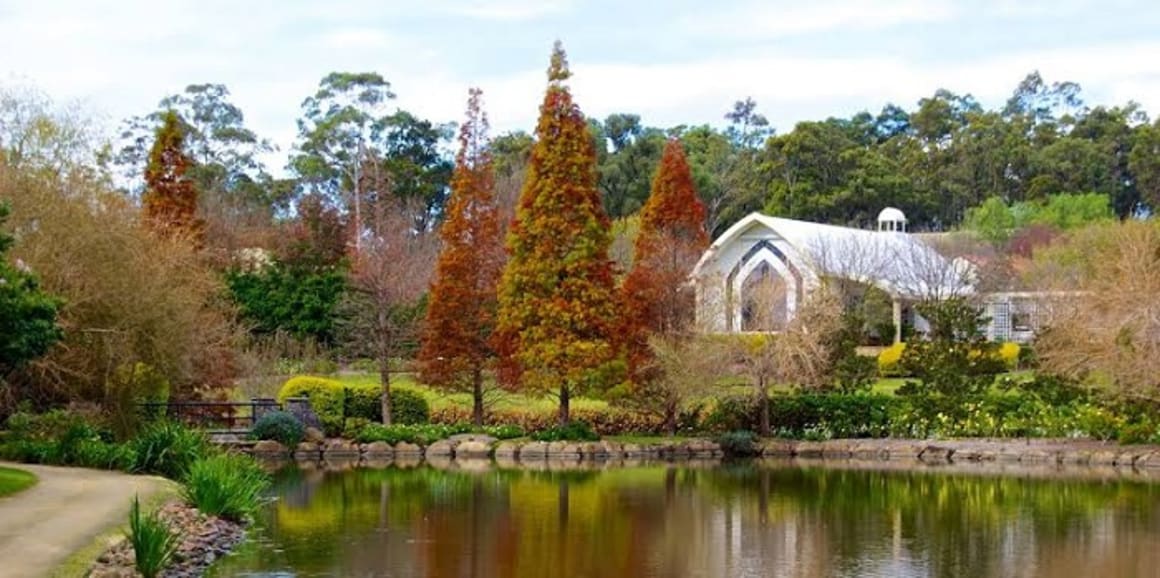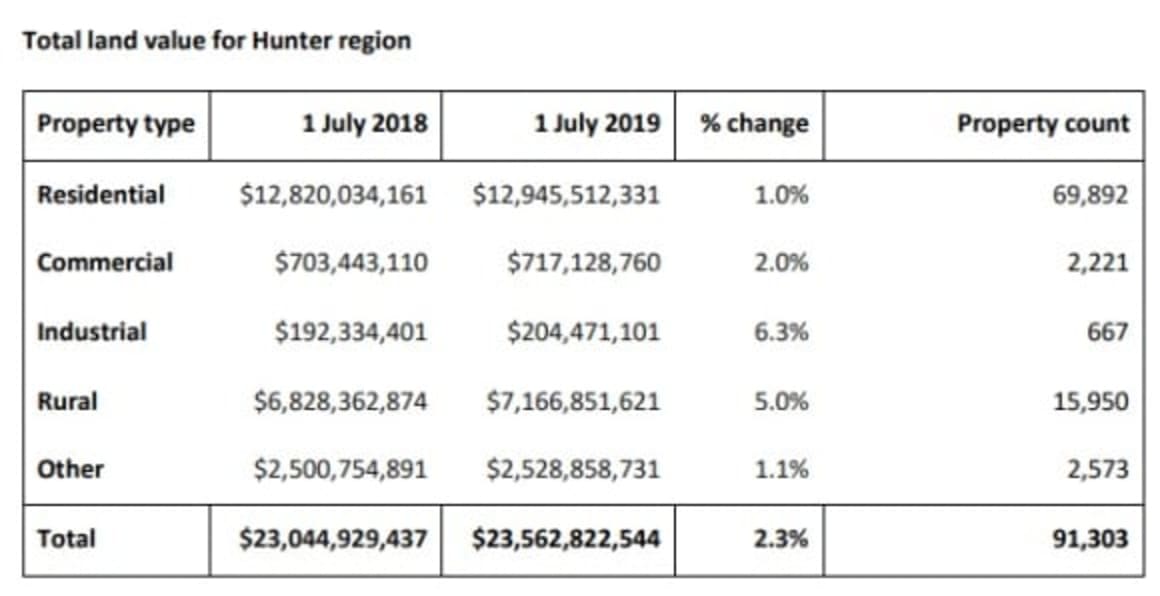Hunter land values increased since July 2018

Land values across the Hunter region have generally increased since 1 July 2018.
The NSW Acting Deputy Valuer General, Paul Chudleigh, has recently published land values for the Hunter region.
The land values reflect the property market at 1 July 2019.

Hunter region local government areas include Cessnock, Dungog, Maitland, Muswellbrook, Singleton, and Upper Hunter.
General overview
The total land value for the Hunter region increased by 2.3 per cent between 1 July 2018 and 1 July 2019 from $23 billion to $23.6 billion.
The movement of residential land values across the region generally remained steady at one per cent. However, a slight increase (3.5 per cent) was experienced in the Upper Hunter local government area.
Overall, commercial land values in the region increased slightly by two per cent. Most land values remained steady, however Maitland local government area experienced an increase of 3.1 per cent attributed to increased demand for commercial services within Maitland’s local centers.
Industrial land values in the region increased moderately overall by 6.3 per cent. The strongest increases were experienced in Cessnock (9.9 per cent) and Maitland (9.7 per cent) where land values were impacted positively by the Hunter Expressway and improved access to Newcastle.
Rural land values experienced an overall increase of five per cent. The rural increases occurred despite ongoing drought conditions. Dungog local government area had the strongest overall increase at 7.6 per cent.
Mr Chudleigh said property sales are the most important factor considered by valuers when determining land values.
“It is important to note that land value is the value of the land only and does not include the value of a home or other structures.”
The 1 July land values have been prepared by private contract valuers with expertise in their local areas working on behalf of the Valuer General, to determine new land values across the region. Property NSW, part of the Department of Planning, Industry and Environment, has quality assured the land values for accuracy and consistency.
Mr Chudleigh said councils receive new land values for rating at least every three years. All councils have been issued with 1 July 2019 land values.
“Land values are one factor used by councils to calculate rates,” said Mr Chudleigh. “Changes in land value don’t always mean a change in council rates.
Each council develops a revenue policy to use when calculating rates to fund services for the community. Councils make their draft policy available for public comment.”
Landholders will receive a Notice of Valuation showing their land value before it is used by council for rating. This gives landholders time to consider their land value.
Revenue NSW will use the 1 July 19 land values to calculate land tax for the 2020 land tax year. Registered land tax clients will receive a land tax assessment from Revenue NSW from late January 2020.